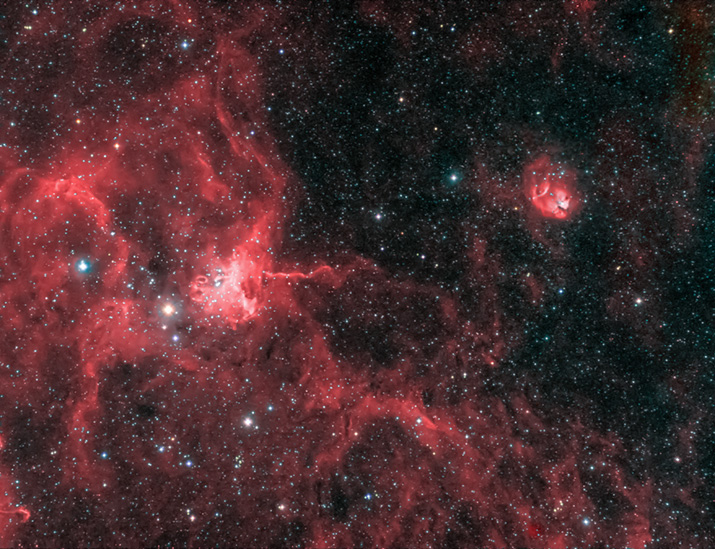
|
Object: IC417 & NGC1931 - The Spider and Fly Nebula
Date: Dec. 18 & 19, 2019 - ; Location: Davis Mountains west of Ft Davis, TX |

|
IC417 & NGC 1931, is commonly known as the Spider and Fly Nebula. They are located approximately 10,000 and 7,000 light-years respectively from the Earth in the constellation Auriga. These two nebulae are composed of massive clouds of gas and dust and is the site of new stellar birth. The gas in the nebula is excited by a clusters of massive, relatively newly formed, stars located near their centers. The large nebula on the left side of the image is the Spider and the small nebula is the Fly. The two bright stars in the Spider are foreground objects and not part of the nebula. The brightest star is designated Phi Aurigae and is only about 450 light years from the Earth. The image above was assembled using hydrogen alpha (Ha) and doubly ionized oxygen (OIII) filtered images. The Ha image was mapped to the Red channel and the OIII was mapped to the Green and Blue channels. This method produces a near true color image that more closely portrays the natural color of the subject object.
Member of the Dark Sky Observatory Collaborative
1https://apod.nasa.gov/apod/ap180129.html
|